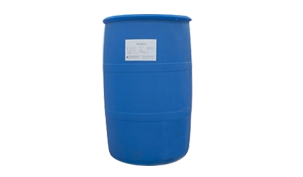The solubilization of oil by surfactant micelles may be an important mechanism for removing a small amount of liquid dirt from the solid surface. Various organic substances insoluble in water are added to different parts of the micelle due to their different properties to form a transparent and stable solution. The non-polar oil is added and dissolved in the non-polar core of the micelle, and the polar oil is added and dissolved in the polar group area of the micelle shell according to its polar size and molecular structure, or the polar group of the oil molecule is anchored on the surface of the micelle, while the non-polar hydrocarbon chain is inserted into the core of the micelle. Therefore, the solubilization effect of removing oil is actually that the oil is dissolved in the washing solution, making it impossible for the oil to be deposited on the surface of the object, which greatly improves the washing effect.

There are many classification methods of surfactants. According to the sources of surfactants, surfactants are usually divided into three categories: synthetic surfactants, natural surfactants and biosurfactants.
According to the types of ions generated by hydrophilic groups, surfactants can be divided into four categories: anionic, cationic, zwitterionic and non-ionic. The hydrophobic groups of commonly used surfactants are hydrocarbon groups, and the molecules may also contain elements such as oxygen, nitrogen, sulfur, chlorine, bromine and iodine, which are called hydrocarbon surfactants or ordinary surfactants. Surfactants containing fluorine, silicon, phosphorus and boron are called special surfactants. Due to the introduction of fluorine, silicon, phosphorus and boron, surfactants have more unique and excellent properties. Fluorinated surfactant is one of the important varieties of special surfactants.
For liquid oil pollution, the adsorption of surfactant on the oil / water interface mainly leads to the reduction of interfacial tension, which is conducive to the cleaning of oil pollution. The decrease of interfacial tension is also conducive to the formation of larger dispersion of emulsion. At the same time, the interfacial film formed by interfacial adsorption generally has greater strength, and the adsorption membrane may be charged (if adsorbed surface active ions), so the emulsion formed has high stability and is not easy to deposit on the surface of the detergent.